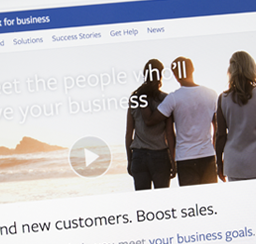Facebook has cemented its place at the top of the social media marketing landscape throughout the past few years, continuously developing and releasing new options to help small-business owners reach and convert new audiences. One of the more recent releases from the social media giant is called “Facebook Lookalike Audiences” and, if you are a small-business owner who has never heard of this, you should read on.
The feature can help to dramatically improve the performance of lead generation and similar processes. Let’s get right to it.
What are Facebook Lookalike Audiences?
Facebook describes this tool as an option business owners have to connect with new individuals outside their current list of followers who are similar to their target audience. Essentially, marketers and small-business owners can develop a custom audience that will be unique to the other lists that have been developed over the years using traditional frameworks such as app data and fans, then supply that to Facebook.
From there, Facebook will identify commonalities between the current fans and followers of a given company and those who have yet to be tapped by these traditional methods most companies are already using. Small businesses will generally fit the mold of what Facebook is looking for in the custom audience segment of the process, as the company demands between 1,000 and 50,000 people.
Furthermore, when aggregating the list, Facebook urges interested parties to not simply group everyone into one pot, but rather find the most loyal, passionate and valuable audience members and put those front and center. This will help to ensure that the Lookalike Audience created is not just a massive group of people, but rather potential buyers and individuals who are likely to be long-time clientele and fans of the business. Each source audience can produce up to 500 new, unique audience members.
How to leverage Lookalike Audiences
The biggest challenge will be the process of converting Lookalike Audiences into added value and revenues, but simple steps can help ensure that small-business owners get back a return on their investments into these endeavors.
AdEspresso recommended small business owners follow Facebook’s guidelines closely in the front end, but also prepare to capitalize long before the Lookalike Audience has been created. For example, this project will tend to increase traffic and popularity on a given site, so the Facebook business page and the e-commerce website should both be in tip-top form as soon as possible.
Integrated campaigns can also be more profitable when the business dives into Lookalike Audiences, as AdEspresso pointed out that launching newsletters, free trials and blasts of deals and coupons in conjunction with the Facebook element should help maximize value down the road.
At the end of the day, small-business owners should view Lookalike Audiences as an approach to lead generation expansions and growing the company’s following, then draw the connection between attraction and conversion.

















